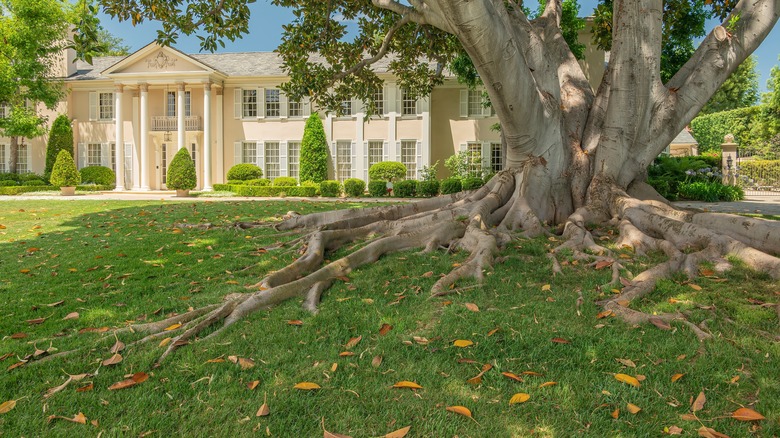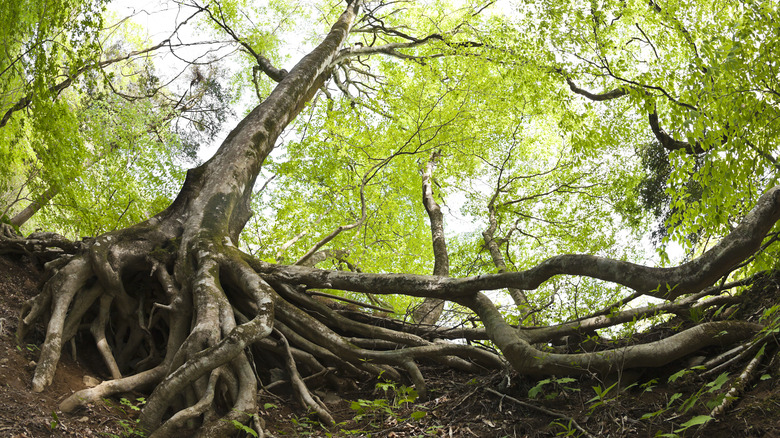Cutting Protruding Tree Roots In Your Yard: Safe To Do Or Harmful Mistake?
A sprawling tree planted in your front or back yard is truly idyllic — it hearkens back to simpler times, inviting humans and animals alike to take shelter under and within its branches. But for all that there is to love about a well-established tree (in many cases, they can even add value to your property), there's the annoying factor of protruding roots. Exposed roots can pose a tripping risk for people, make it significantly more difficult to do yard work, impinge on underground sewer pipes, and generally detract from the overall aesthetic of a property; but is removing these invasive roots even on the table?
If you are considering removing above-the-ground roots from your yard, it is of paramount importance to not indiscriminately begin hacking away at whatever you see. In some cases, it can be safe to cut exposed roots — if they are less than 2 inches in diameter and if you remove no more than 15% every two to three years — but in most circumstances, you should avoid damaging your trees' roots in any way. A local arborist will be your best bet for providing personalized recommendations based on your yard and tree.
Why roots matter
Roots serve a variety of important purposes, but broadly speaking, they provide a direct source of nutrients to trees and help them stay securely in the ground. While protruding roots are an annoyance and — in worst-case scenarios — downright ugly, learning why some trees have such root-growth patterns may make you more understanding and less likely to resort to extreme measures. Although you may feel that you are seeing the entire root network monopolizing your front turf, the truth is that the vast majority of roots are out of sight.
The most common reason for roots to emerge above the surface is when trees are cramped for space; it is their way of increasing access to natural resources, including water, and oxygen. A highly visible root system, therefore, likely means that someone made a mistake when planting the tree, failing to consider its long-term needs (or that new construction invaded the tree's space after it was already established). At any rate, most trees would prefer to send their roots deeper into the soil, where they would be insulated from surface-level damage, but less-than-ideal environments may call for shallower growth in the hunt for nutrients.
Options to mitigate the root problem
There is no denying that sprawling roots are unsightly and inconvenient. If cutting them away is not an option, you may be asking yourself if there is anything you can do to address the issue. Several options exist, although it should be noted that none of them are permanent solutions; over time, you will likely be faced with visible roots again — eventually, you may learn to accept them for what they are.
Perhaps the best and longest-lasting approach is to install ground cover plants that will slowly begin to grow over the tree's roots — lamb's-ear and Yerba Buena are two aesthetically pleasing options (be sure to research what ground cover plants you should grow for your situation). Ground cover will prevent the roots from being visible, as well as guarantee that they are protected. Remember to plant with care, avoiding inadvertently injuring the roots in the process. If you don't want to add new plants to the mix, mulch can provide a quick remedy, which will keep your tree's roots healthy. For a short-term solution, you can replant grass over the roots after adding a couple of inches of high-quality soil.


